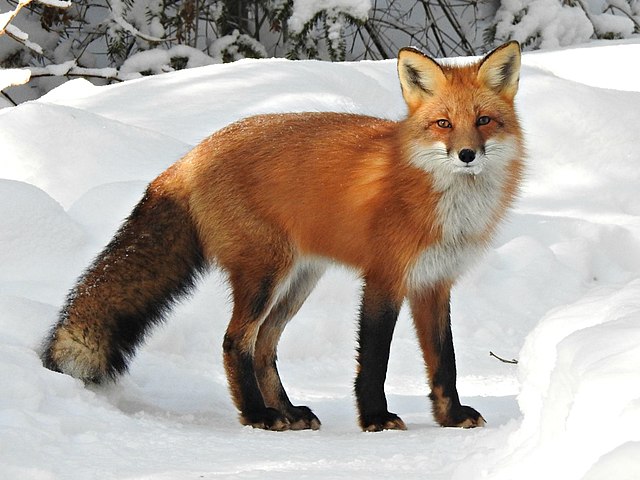The red fox (Vulpes vulpes) is a highly adaptable and clever species found in various parts of the world. It is known for its resourcefulness and survival skills, making it one of the most successful carnivores in the animal kingdom. Here are some key characteristics and behaviors that highlight the red fox’s status as a clever survivor:
Wide Geographic Range:
Red foxes have a broad distribution and can be found in North America, Europe, Asia, and parts of North Africa. They have adapted to diverse environments, from forests and grasslands to urban areas.
Diverse Diet:
Red foxes are opportunistic feeders and have a varied diet that includes small mammals, birds, insects, fruits, and vegetation. They are known for their ability to catch and consume a wide range of prey.
Nocturnal Behavior:
Red foxes are primarily nocturnal, which means they are most active during the night. This behavior helps them avoid daytime predators and human activity.
Cunning Predators:
Red foxes are skilled hunters that use stealth and strategy to catch their prey. They can stalk, pounce, or dig to capture animals like rodents or rabbits.
Caching Food:
Red foxes may bury excess food when resources are abundant, creating caches to return to during lean times. This behavior reflects their forward-thinking and planning abilities.
Solitary or Social:
Red foxes can exhibit both solitary and social behaviors. Some live alone, while others form family groups, known as a “vixen” with her offspring. Social groups often include cooperation in raising young and sharing resources.
Complex Communication:
Red foxes use a variety of vocalizations and body language to communicate. They can bark, growl, scream, and use high-pitched calls to communicate with other foxes, particularly during the mating season.
Territorial Behavior:
Red foxes establish territories that they defend against other foxes. Scent marking with urine and feces is a common way they delineate their territory.
Long-Term Mates:
In many cases, red foxes form monogamous pairs that mate for life. Mated pairs work together to raise their young, reinforcing their reputation for family-oriented behavior.
Urban Adaptation:
Red foxes have successfully adapted to urban and suburban environments, where they scavenge for human food waste and prey on small mammals that thrive in human-altered landscapes.
Color Variability:
Red foxes exhibit a range of coat colors and patterns. While the “red fox” is often associated with a reddish coat, they can also be silver, black, or have a variety of color phases, depending on their region.
Clever Problem Solvers:
Red foxes are known for their problem-solving abilities. They can adapt to new challenges, such as finding food in urban environments, and use their intelligence to succeed.
Endurance and Speed:
Red foxes are agile runners and can reach speeds of up to 45 miles per hour (72 kilometers per hour) for short distances, which is essential for chasing prey or evading predators.
The red fox’s adaptability, intelligence, and survival skills have contributed to its success in a range of environments. Their clever and resourceful behaviors make them one of the most iconic and well-adapted carnivores in the animal kingdom.










